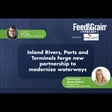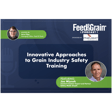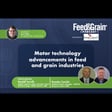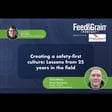Become a Creator today!Start creating today - Share your story with the world!
Start for free
00:00:00
00:00:01

The newest technology in concrete structure inspections
In this episode of the Feed & Grain Podcast, Cheyenne Wohlford, CEO and president of CCS Group, LLC stopped by to talk with host Steven Kilger about effectively handling human resources as a small company. They talk about concrete structure inspection, how often it should be done, what an inspection covers, technology like drones and radar scans, plus all the data that can be gathered during a visit.
Podcast sponsored by Pneumat Systems.

















